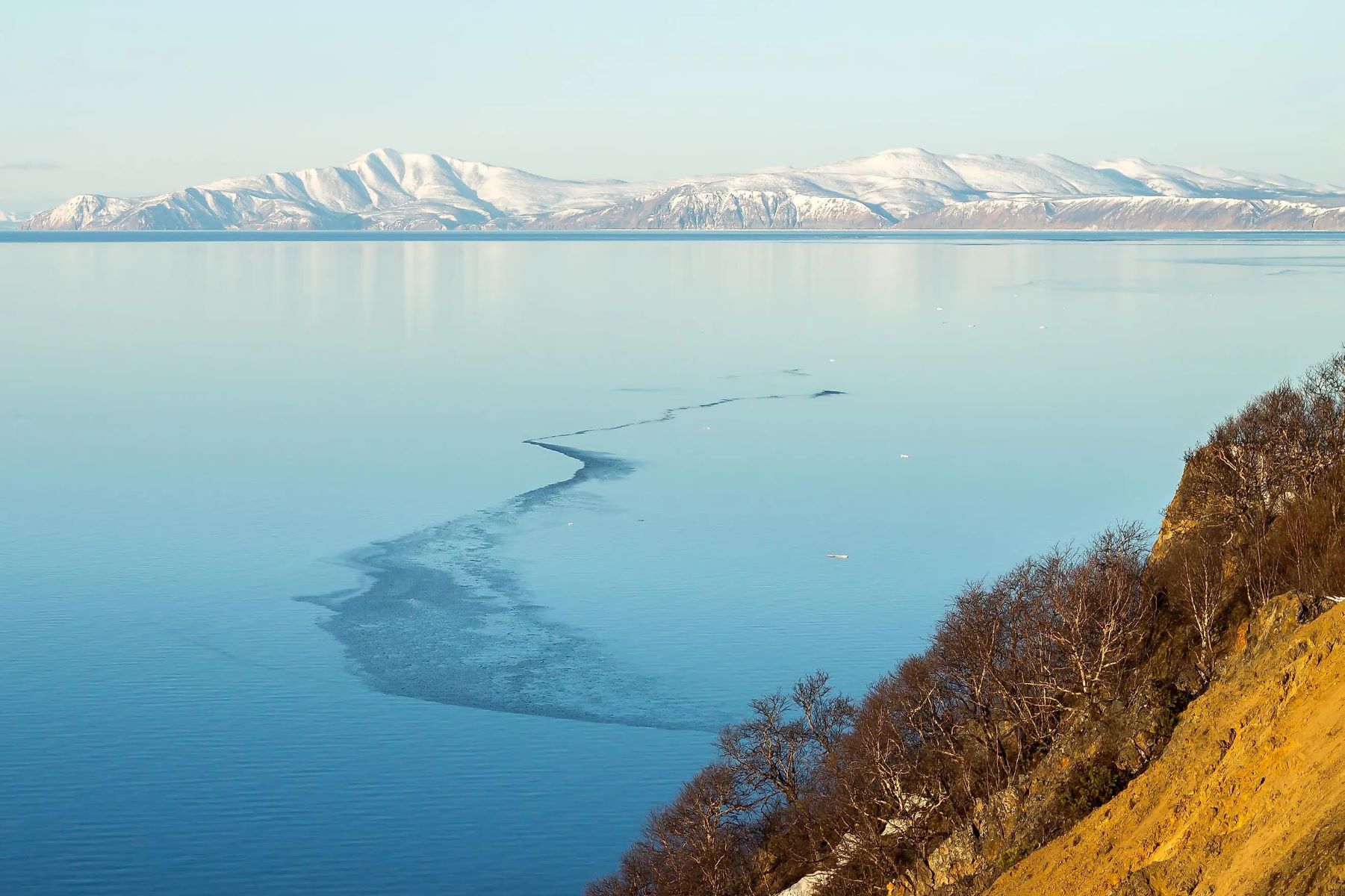
Where is the Sea of Okhotsk? The Sea of Okhotsk lies in the northwest Pacific Ocean, bordered by Russia and Japan. This chilly sea, named after the Russian port town Okhotsk, is a hidden gem of marine life and natural beauty. It stretches from the Kamchatka Peninsula to the Kuril Islands, touching the eastern coast of Siberia. Known for its harsh winters and icy waters, the Sea of Okhotsk is a crucial habitat for various species, including whales, seals, and seabirds. Its remote location and extreme conditions make it one of the least explored seas, holding many secrets beneath its waves.
Location and Geography
The Sea of Okhotsk, located in the northwest Pacific Ocean, is surrounded by Russia and Japan. This sea is known for its unique geography and harsh climate.
- The Sea of Okhotsk is bordered by the Kamchatka Peninsula, the Kuril Islands, Sakhalin Island, and the Russian mainland.
- It covers an area of approximately 1.6 million square kilometers.
- The sea is relatively shallow, with an average depth of about 859 meters.
- The deepest point in the Sea of Okhotsk is the Kuril-Kamchatka Trench, reaching depths of over 3,372 meters.
Climate and Ice
The climate in the Sea of Okhotsk is cold and harsh, with significant ice coverage during winter months. This impacts both marine life and human activities.
- The sea experiences long, cold winters with temperatures often dropping below -20°C.
- Ice covers the sea from November to June, making navigation challenging.
- The Sea of Okhotsk is one of the southernmost regions in the Northern Hemisphere where sea ice forms.
- Icebreakers are commonly used to maintain shipping routes during winter.
Marine Life
Despite its harsh conditions, the Sea of Okhotsk is home to diverse marine life, including many commercially important species.
- The sea is a crucial habitat for various species of fish, including pollock, herring, and salmon.
- Marine mammals such as seals, sea lions, and whales are commonly found in the Sea of Okhotsk.
- The sea is an important breeding ground for the endangered Steller sea lion.
- The nutrient-rich waters support a wide range of plankton, which forms the base of the marine food web.
Economic Importance
The Sea of Okhotsk plays a significant role in the economy of the surrounding regions, particularly in terms of fishing and natural resources.
- The sea is one of the world's most productive fishing grounds, especially for pollock.
- Russia and Japan both have significant fishing fleets operating in the Sea of Okhotsk.
- The sea is also rich in natural resources, including oil and natural gas reserves.
- Offshore drilling platforms are a common sight in the Sea of Okhotsk.
Historical Significance
The Sea of Okhotsk has a rich history, with various nations exploring and utilizing its resources over the centuries.
- Russian explorers first mapped the Sea of Okhotsk in the 17th century.
- The sea was named after the Russian port town of Okhotsk, which was founded in 1643.
- During World War II, the Sea of Okhotsk was a strategic location for both Japanese and Soviet forces.
- The sea has been a traditional hunting ground for indigenous peoples, including the Ainu and Nivkh.
Environmental Concerns
Like many marine environments, the Sea of Okhotsk faces several environmental challenges that threaten its ecosystem.
- Overfishing is a significant concern, particularly for species like pollock and salmon.
- Climate change is affecting ice coverage and water temperatures in the Sea of Okhotsk.
- Pollution from shipping and offshore drilling poses a threat to marine life.
- Conservation efforts are underway to protect endangered species and manage fish stocks sustainably.
Unique Features
The Sea of Okhotsk has several unique features that set it apart from other bodies of water.
- The sea is known for its "ice volcanoes," which are formed by the freezing of methane gas bubbles.
- The Kuril Islands, located in the Sea of Okhotsk, are home to some of the most active volcanoes in the world.
- The sea's unique combination of cold temperatures, ice coverage, and nutrient-rich waters creates a distinctive marine ecosystem.
The Final Splash
The Sea of Okhotsk holds a treasure trove of fascinating facts. From its rich biodiversity to its historical significance, this body of water is more than just a geographical feature. It's a crucial habitat for many species and a vital resource for surrounding communities. Understanding its unique characteristics helps us appreciate the delicate balance of our planet's ecosystems. Whether you're a nature enthusiast or just curious about the world, the Sea of Okhotsk offers a wealth of knowledge. So next time you think about the world's oceans, remember this remarkable sea and its impact on our environment. Dive into its history, explore its depths, and cherish the wonders it holds.
Was this page helpful?
Our commitment to delivering trustworthy and engaging content is at the heart of what we do. Each fact on our site is contributed by real users like you, bringing a wealth of diverse insights and information. To ensure the highest standards of accuracy and reliability, our dedicated editors meticulously review each submission. This process guarantees that the facts we share are not only fascinating but also credible. Trust in our commitment to quality and authenticity as you explore and learn with us.


